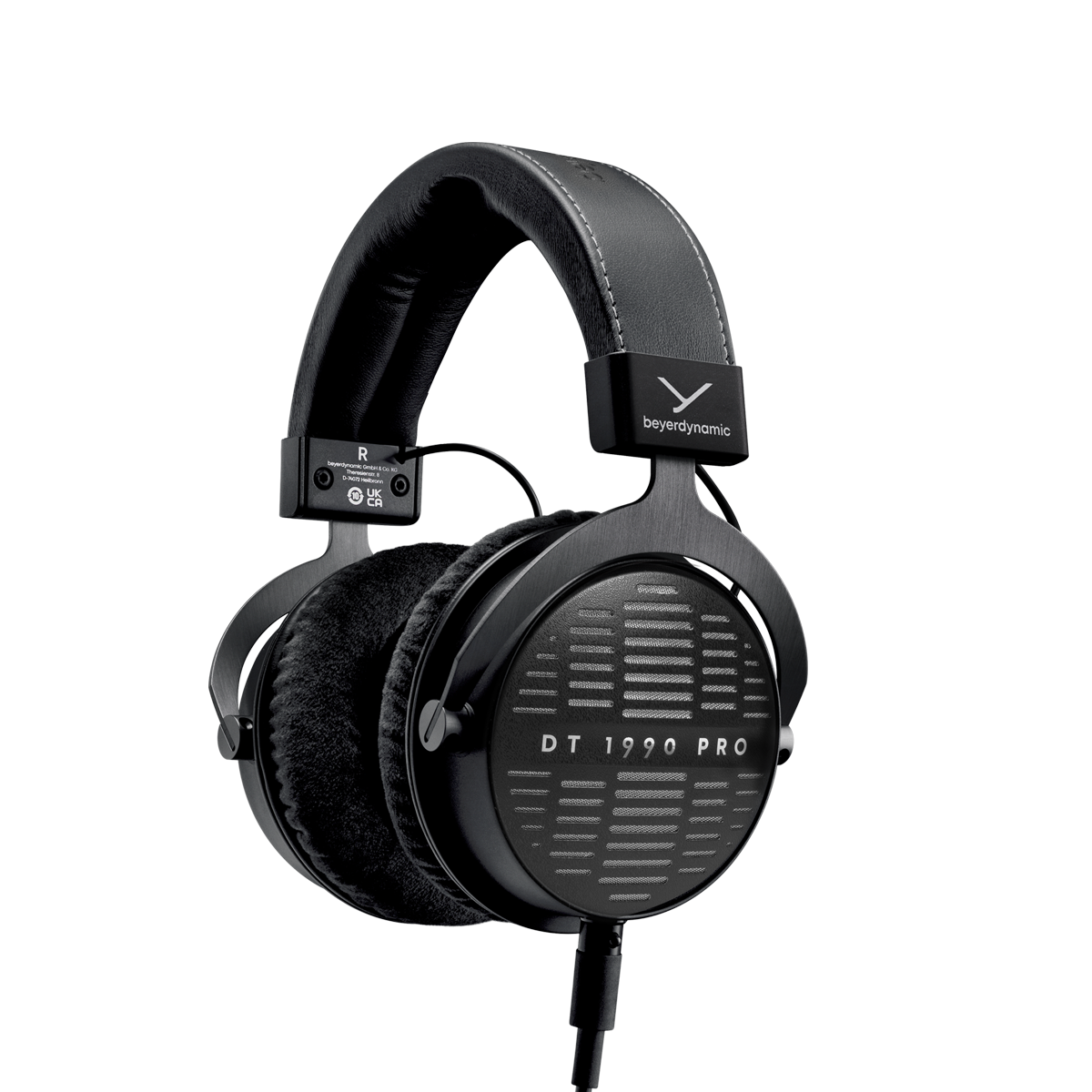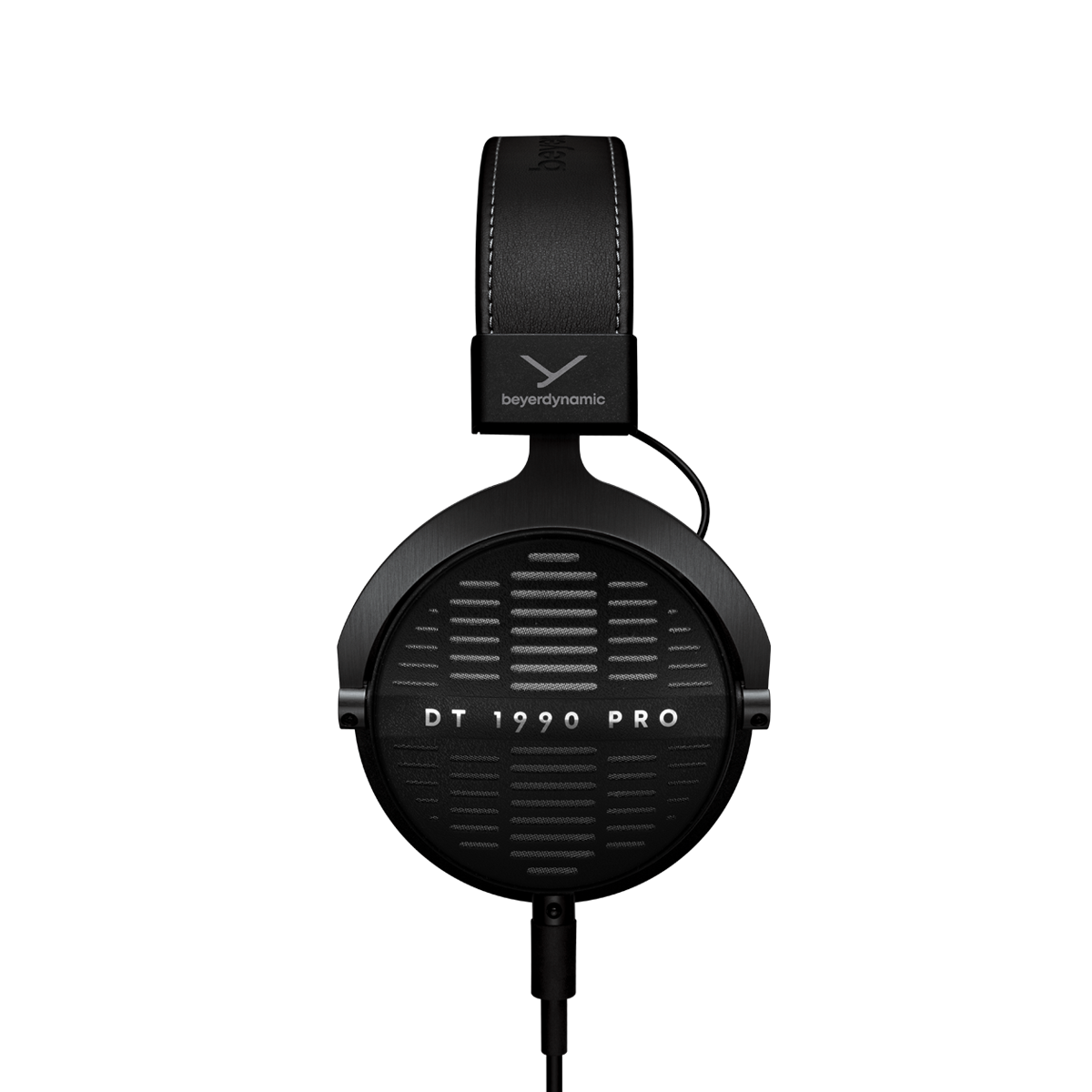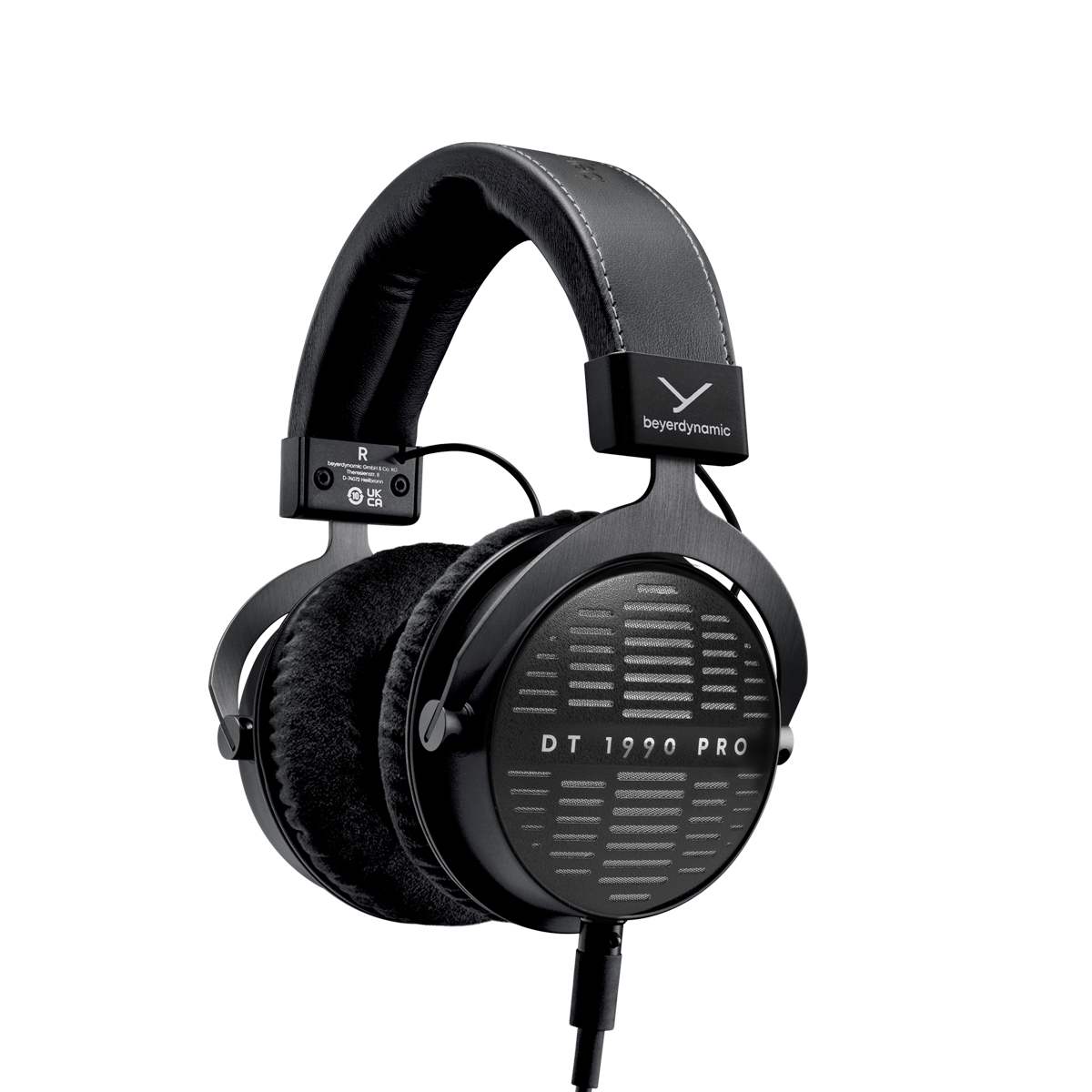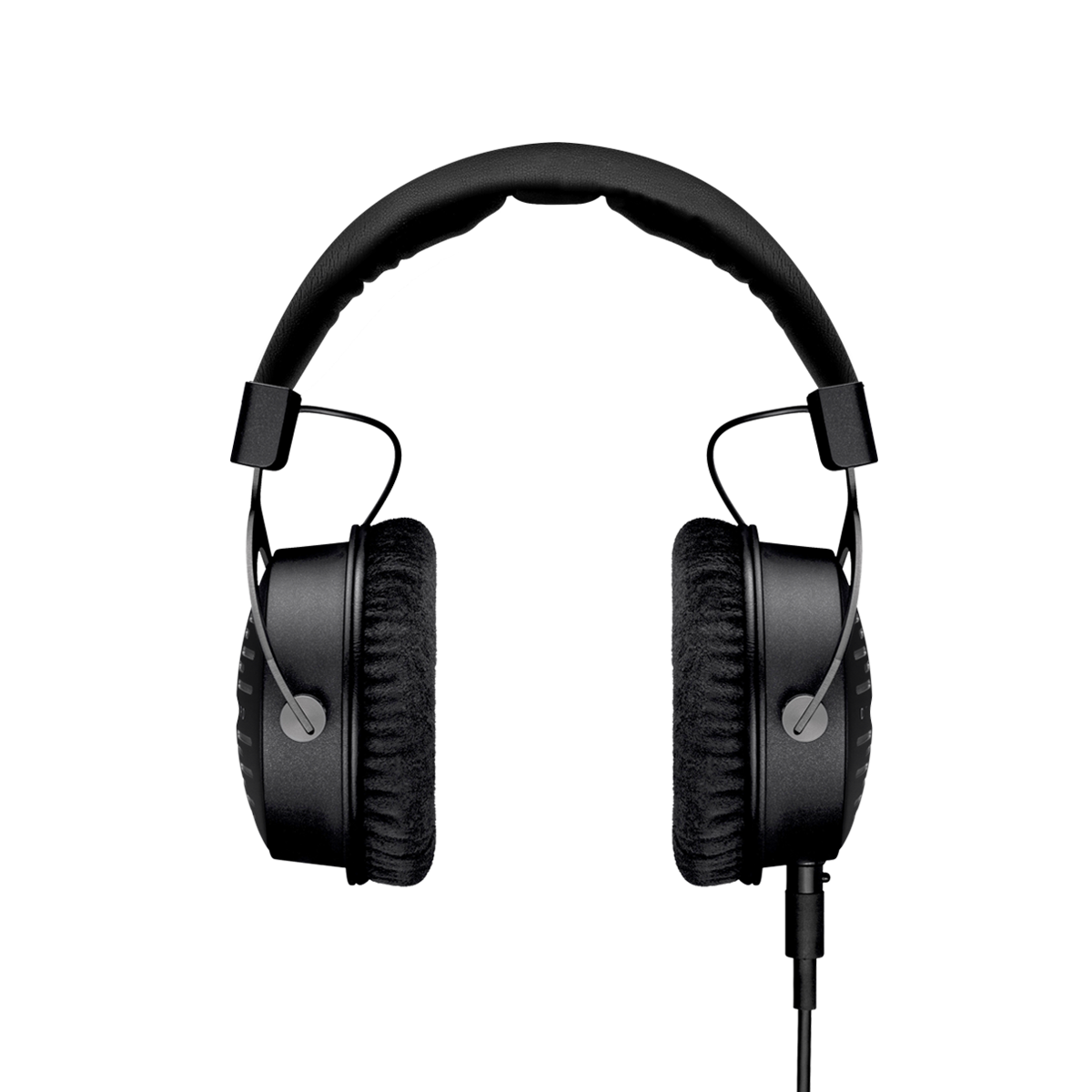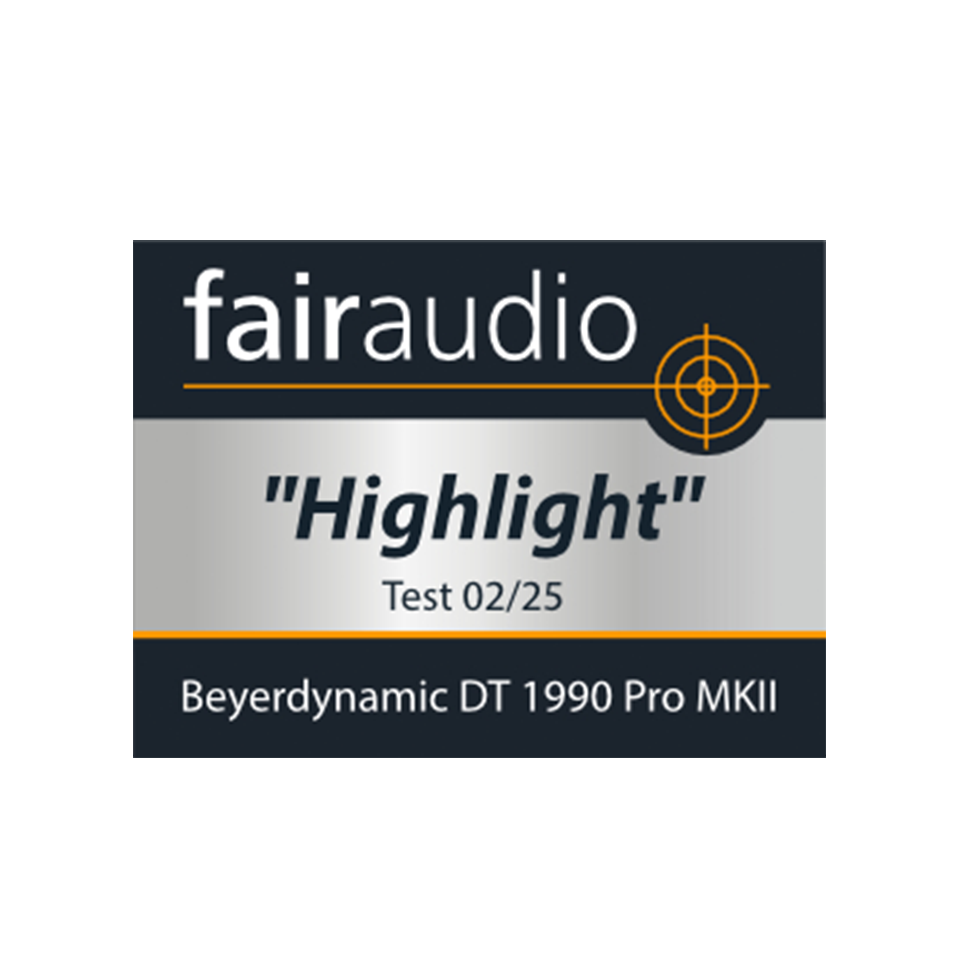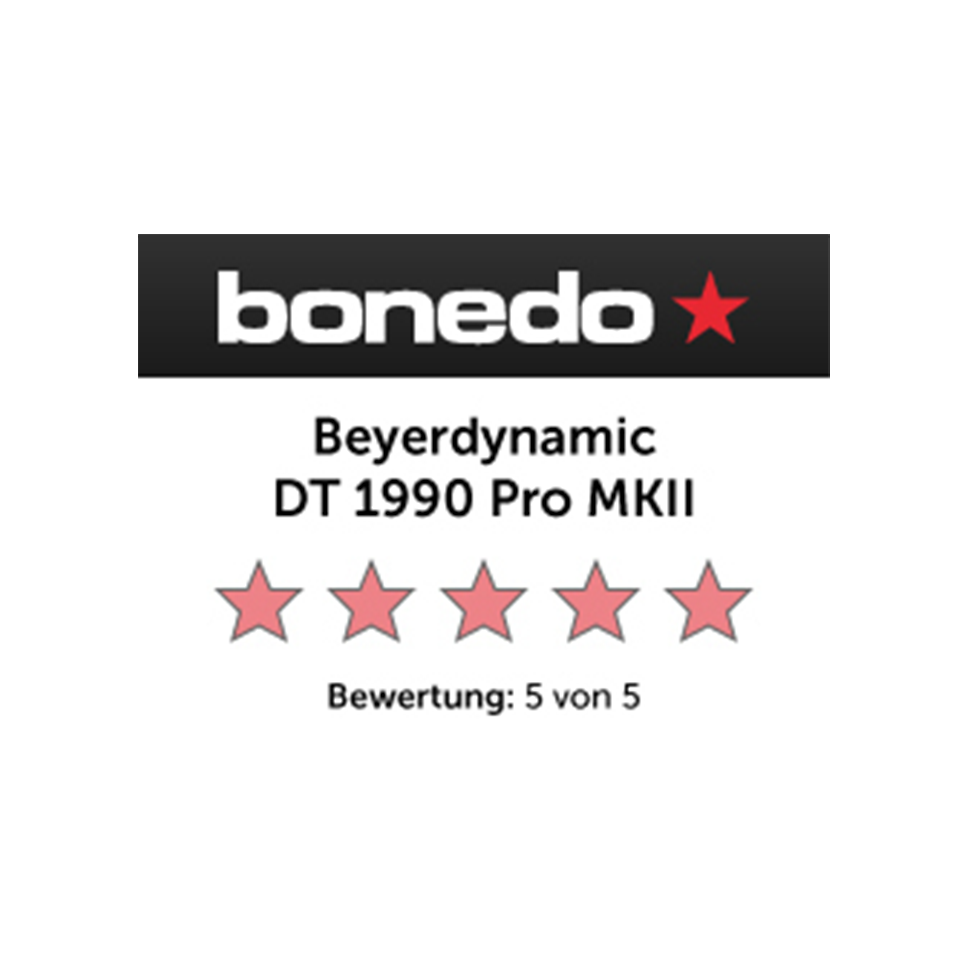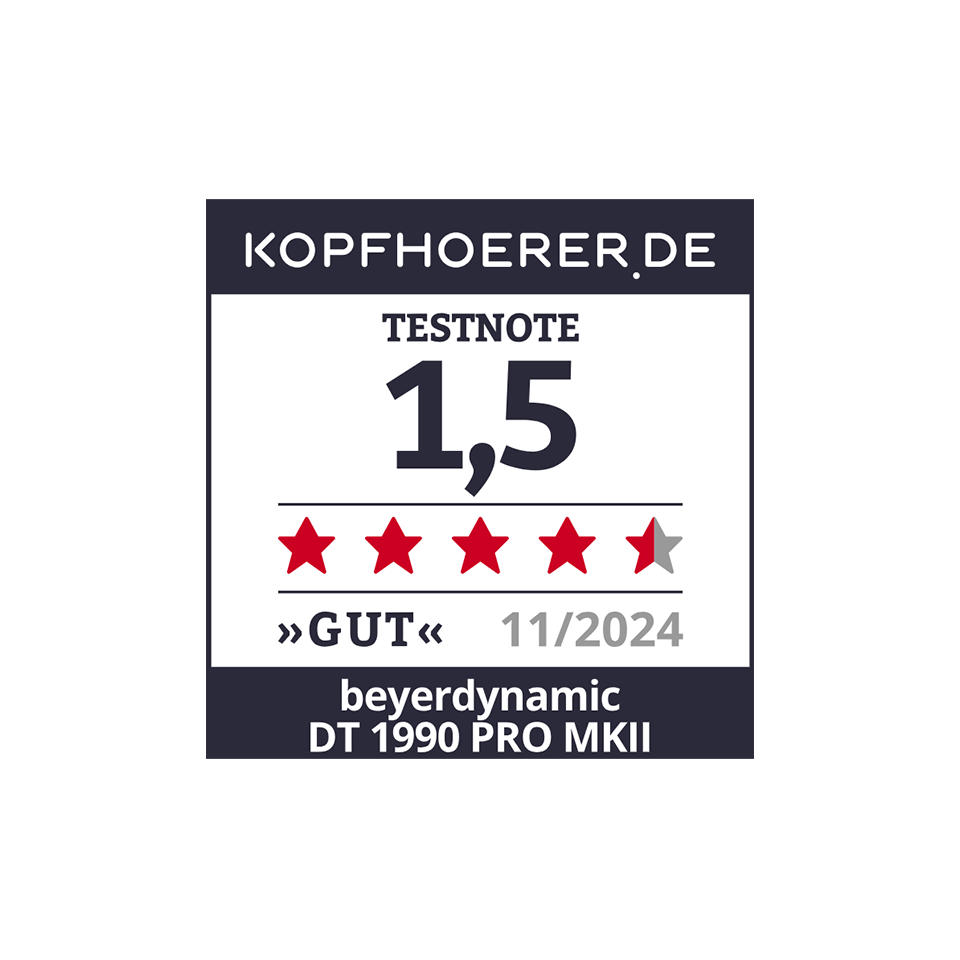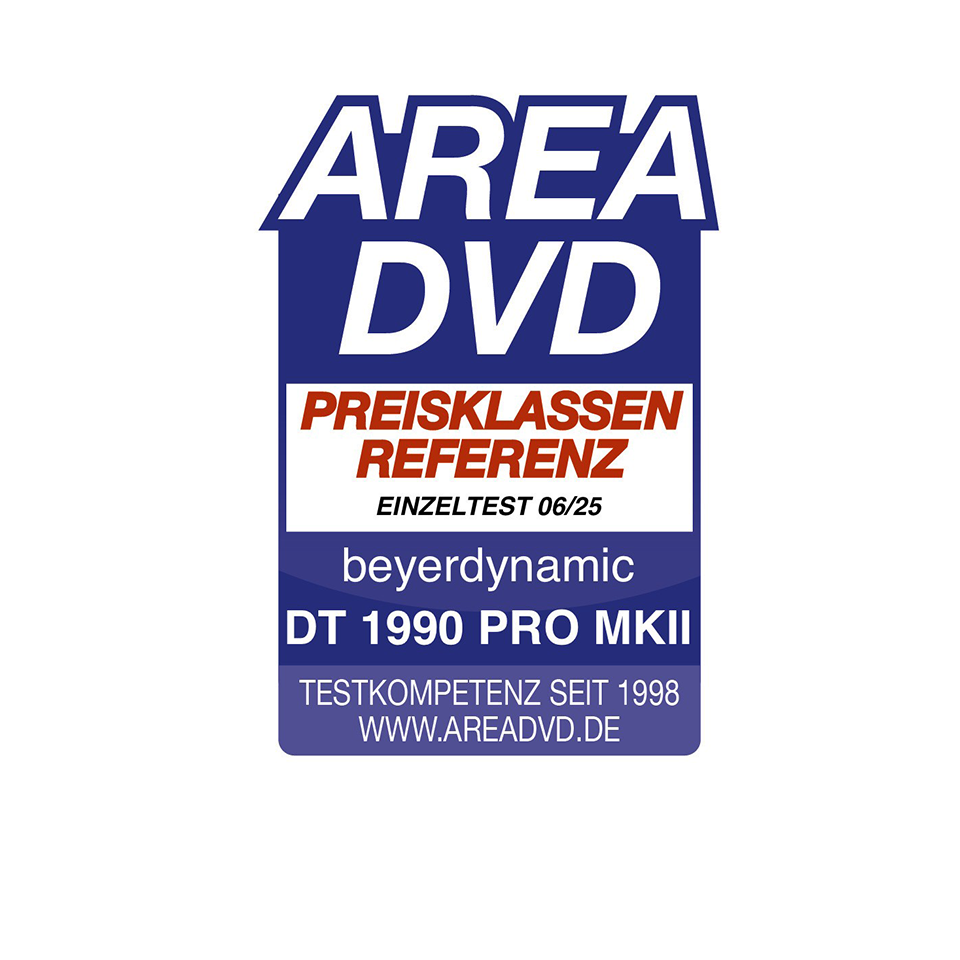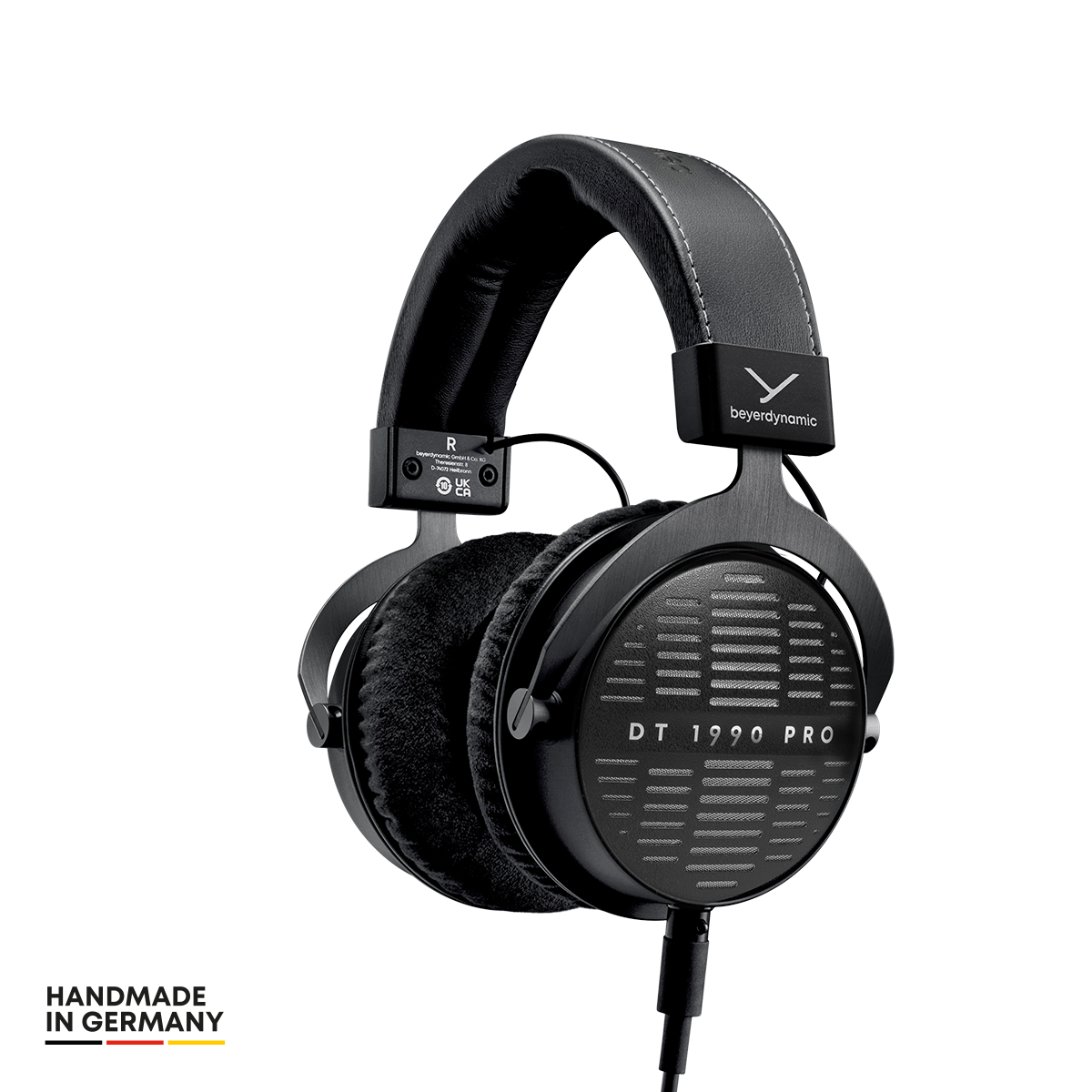DT 1990 PRO MKII
- Premium circumaural studio headphones
- For a variety of devices thanks to the improved TESLA.45-driver (30 ohms)
- Incl. detachable cable (mini-XLR) and extensive scope of delivery
- Industry-leading workmanship “Made in Germany”
- Superb wearing comfort
Discover DT 1990 PRO MKII as B-Stock >
Discover our headphone holder as the perfect accessory for your over ear headphones. View product >
TECHNICAL DATA
| Wearing Style | Over-ear |
|---|---|
| Operating Principle | Open |
| Transmission Type | Wired |
| Remote | Without Remote |
| Nominal Impedance Headphones | 30 ohms |
| Weight headphones without cable | 376 g |
| Headphone frequency response | 5-40,000 Hz |
| Nominal sound pressure level | 94 dBSPL (1mW/500Hz) |
| Sound coupling to the ear | Circumaural (around the ear) |
| Cable & Plug | 3-pin XLR plug, 6.35 mm (1/4") stereo jack plug, 3 m straight cable & 5 m coiled cable |
| Article No. | 1000303 |
| EAN | 4010118001550 |
Manufacturer specifications
Brand: beyerdynamic
Manufacturer Address: beyerdynamic GmbH & CO. KG, Theresienstr. 8, D-74072 Heilbronn
info@beyerdynamic.de
www.beyerdynamic.com
INDUSTRY-LEADING WORKMANSHIP
Thanks to our German manufacturing expertise, the DT 1990 PRO MKII sets the benchmark in workmanship and durability. The TESLA.45 driver systems are measured within tight tolerances several times during production. High-quality materials such as anodised metal and hard-wearing plastics make the DT 1990 PRO MKII a long-term investment. In the interest of sustainability, almost every part of the premium headphones can be replaced.
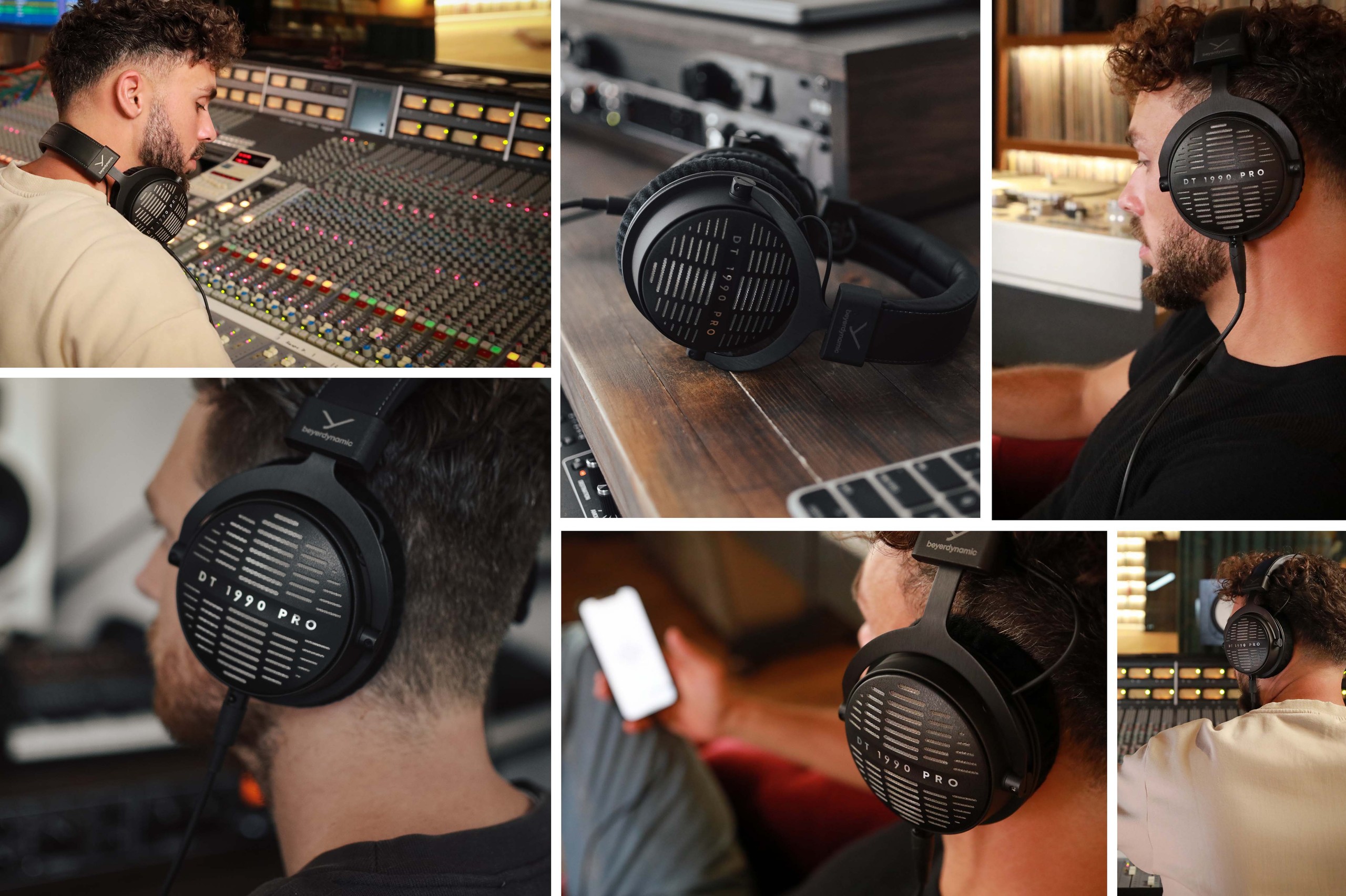
Any questions left?
All FAQ >
In which areas has the new TESLA.45 transducer been improved compared to its predecessor?
Both the closed-back DT 1770 PRO MKII and the open-back DT 1990 PRO MKII are equipped with two TESLA.45 drivers, each measuring 45 mm in diameter. The powerful neodymium magnet achieves a flux density of over one Tesla in the voice coil air gap, resulting in particularly strong driver performance.Thanks to the structurally optimized diaphragm, the level of distortion and impulse response has been significantly improved compared to the previous model, leading to a clearer sound profile. The diaphragm, made of high-performance PEEK polymer, ensures precise bass reproduction, while the refined treble profile is achieved through a lightweight voice coil made of aluminum-coated copper wire.The newly developed system combines flexibility and exceptional sound quality due to the use of modern materials and manufacturing techniques. With an impedance of 30 ohms, both models are suitable for a wide range of devices, providing reference-quality sound that meets the needs of professional users.
Why do the DT 1770 PRO MKII and DT 1990 PRO MKII have an impedance of 30 ohms?
Many playback devices lack the output voltage necessary for driving high-impedance headphones. The lower impedance of these models increases versatility, allowing them to perform well with various devices.How do the Producing Velours differ from the Mixing & Mastering Velours?
The "Producing Velours"" of the DT 1990 PRO MKII, recognizable by the many small acoustic cutouts on the back of the ear pads, offers a full and powerful sound, ideal for music production. In contrast, the "Mixing & Mastering Velours" deliver an analytical sound that is optimized for the highest precision when mixing and mastering. These can be recognized by four small acoustic cutouts on the back of the ear pad.How does the sound signature differ from the DT 1990 PRO to the DT 1990 PRO MKII?
The DT 1990 PRO MKII offers precise bass reproduction and improved treble balance for an open-back headphone compared to its predecessor. The treble at 8 kilohertz has been slightly attenuated to avoid mixing errors, while the clarity and precision in the treble range of the predecessor have been retained.All FAQ >
what's in the box

AWARDS

TEST REPORTS

beyerdynamic DT 1990 Pro MKII Review: Outstanding studio headphones
Even when used for gaming, the beyerdynamic DT 1990 Pro MKII impressively demonstrate their qualities and tease out acoustic details in competitive shooters that remain hidden with other headphones (not to mention gaming headsets). I particularly like the reduction of shrill sounds in the high frequency range around 8,000 Hz, which takes the edge off current productions (and games) and thus has a positive effect on listening pleasure, while at the same time further increasing the level of detail.
2024-11-20
basic-tutorials.com

